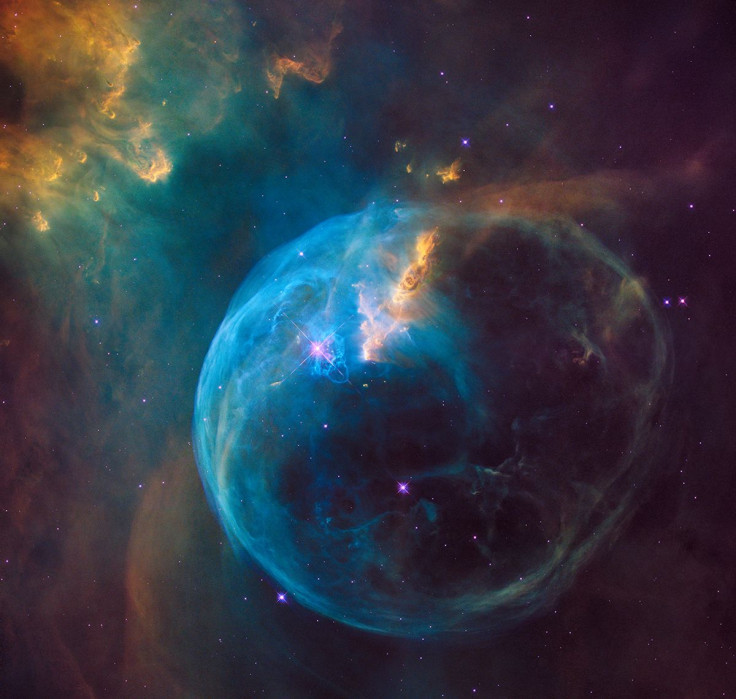NASA Celebrates Hubble’s Birthday With Gigantic Cosmic Bubble

Space, as Douglas Adams once observed, is "mind-bogglingly big." As tiny creatures inhabiting a pale blue dot lost in the cosmic void, the true size of the universe we live in was, for the longest time, beyond our grasp, until, in 1990, the Hubble Space Telescope was launched.
On Sunday, Hubble will turn 26. To commemorate the occasion, NASA and the European Space Agency released a stunning image of the aptly-named “Bubble Nebula,” captured in unprecedented detail by the telescope earlier this year.
“As Hubble makes its 26th revolution around our home star, the sun, we celebrate the event with a spectacular image of a dynamic and exciting interaction of a young star with its environment,” John Grunsfeld, Hubble astronaut and associate administrator of NASA’s Science Mission Directorate at NASA Headquarters in Washington, D.C., said in a statement.
The Bubble Nebula, also known as NGC 7635, is located 7,100 light-years from Earth in the constellation Cassiopeia, and is seven light-years across. It was discovered by the British astronomer William Herschel way back in 1787 and was first captured by Hubble's Wide Field Planetary Camera in 1992.
The star that is creating this nebula is a Wolf-Rayet star that is expected to detonate as a supernova anytime between 10 million and 20 million years from now.
Wolf–Rayet stars “live fast and die hard,” exploding as supernovae and blasting vast amounts of heavy elements into space to be used by later generations of stars and planets. Scientists study these celestial giants in order to understand how some of the largest and most massive stars in the universe evolve.
“As the surface of the bubble's shell expands outward, it slams into dense regions of cold gas on one side of the bubble. This asymmetry makes the star appear dramatically off-center from the bubble, with its location in the 10 o’clock position in the Hubble view,” NASA said in the statement. “Dense pillars of cool hydrogen gas laced with dust appear at the upper left of the picture, and more ‘fingers’ can be seen nearly face-on, behind the translucent bubble.”
When the star’s ultraviolet radiation strikes the gases in the nebula, they heat up, giving out radiation ranging in wavelength from blue — emitted by hot oxygen in the bubble near the star — to yellow — emitted by hot hydrogen and nitrogen.
The Hubble Space Telescope was launched aboard NASA’s space shuttle Discovery on April 24, 1990. Since then, it has not only captured an unimaginable number of truly spectacular nebulae and galaxies, it has also peered back over 13 billion years to look at our cosmos in its infancy, giving us, as Grunsfeld explains, “a front row seat to the awe inspiring universe we live in.”
© Copyright IBTimes 2024. All rights reserved.





















